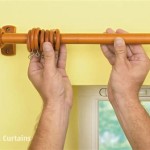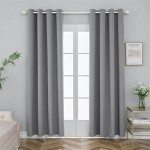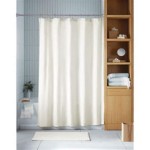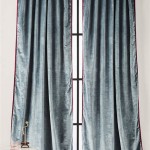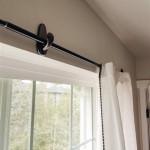Best Air Curtain for Home: A Comprehensive Guide
Air curtains, also known as air doors, have become increasingly popular in homes, providing a barrier against unwanted elements such as insects, drafts, and temperature fluctuations. While they were initially designed for commercial settings, their benefits are now being recognized for residential applications, particularly in areas like doors, windows, and even fireplaces. This article provides a comprehensive guide to help you understand the best air curtains for home use, addressing key factors like size, functionality, and budget.
Factors to Consider When Choosing an Air Curtain
Selecting the right air curtain for your home involves considering a number of factors that determine its effectiveness and suit your specific needs. These factors include:
1. Size and Installation Considerations
The dimensions of the air curtain are crucial for its efficiency. It needs to be adequately sized to cover the entire doorway or window opening. Measure the width of the opening and choose an air curtain that slightly exceeds this measurement. Consider the height of the opening as well, as installing a curtain that is too short will not provide optimal air sealing. Installation is another crucial aspect. Some air curtains come with easy-to-install mounting brackets while others might require professional assistance. Ensure the chosen air curtain is compatible with your home's structural features and accessible for installation.
2. Airflow and Power Consumption
Airflow refers to the volume of air moved by the air curtain. Higher airflow is generally more effective at creating a barrier against drafts and insects. However, it comes with increased power consumption. Consider your specific needs and the size of the opening to determine the appropriate airflow. Energy efficiency is a significant factor in choosing an air curtain, especially for long-term use. Look for models with energy-saving features like adjustable speed settings and automatic timers to minimize energy consumption.
3. Noise Levels and Temperature Control
Air curtains can generate varying levels of noise depending on their motor size and airflow. While noise levels are typically minimal in modern models, consider this aspect if the air curtain will be installed in a quiet area like a bedroom. Temperature control is another important consideration. Some air curtains have built-in heating or cooling elements to regulate the temperature inside your home. This feature can be particularly beneficial in climates with extreme temperatures.
Types of Air Curtains for Home Use
Air curtains are available in different types, each designed for specific applications and purposes. The most common types for home use include:
1. Recessed Air Curtains
Recessed air curtains are installed directly into the ceiling or wall, providing a sleek and integrated look. They are ideal for areas where aesthetics are a priority, like modern homes or commercial spaces. However, installation can be more complex and may require professional assistance.
2. Surface-Mounted Air Curtains
Surface-mounted air curtains are installed on the surface of the wall or ceiling, offering a simple and straightforward installation process. They are readily available and suitable for various applications, including doors, windows, and fireplaces. However, they may be less aesthetically pleasing compared to recessed models.
3. Portable Air Curtains
Portable air curtains are freestanding units that can be easily moved to different locations. They provide flexibility and are particularly useful for temporary or seasonal installations. However, they might not be as powerful or efficient as fixed models.
Key Benefits of Using Air Curtains in Your Home
Air curtains offer numerous benefits for home use, making them a worthwhile investment for enhancing comfort and energy efficiency. These benefits include:
1. Insect and Draft Control
Air curtains create an invisible barrier that effectively prevents insects, dust, and drafts from entering your home. This helps keep your living space clean and comfortable, especially during the summer months when insects are prevalent.
2. Improved Energy Efficiency
By blocking drafts, air curtains help reduce heat loss in the winter and prevent cool air from escaping in the summer, contributing to energy savings. This can lead to lower energy bills and a smaller environmental footprint.
3. Enhanced Comfort and Safety
Air curtains maintain a consistent temperature inside your home by preventing drafts and temperature fluctuations. This creates a more comfortable living environment, particularly for those sensitive to temperature changes. They also improve safety by preventing the spread of smoke and fumes from fireplaces, ensuring better air quality.
In conclusion, selecting the right air curtain can significantly enhance your home's comfort, efficiency, and safety. By considering factors like size, airflow, noise levels, and installation options, you can choose the best air curtain for your specific needs and create a more enjoyable living environment.

Best Steel Air Curtain Eis India S Largest Selling

Qe 48 Air Curtain Fly Fan W Remote 220 240 V The Best Mini Split

Best Steel Air Curtain Eis India S Largest Selling

Best Energy Efficient Air Curtains Dimplex Hyco Thermoscreens Mastertrade

The Best Air Curtain In Dubai A Complete Guide For Pers Uae

Best S Teco Tac9004rc Air Conditioner Low Cost Installation Brisbane Sydney

Air Curtain Daitsu Aud 120 K Series Jet Climamania

Air Curtain Manufacturer And Supplier In China Miracle Refrigeration

Air Curtain Mitsubishi Electric Australia

Indoor Air Curtain For Doors 59 Inch 2 Egypt U

